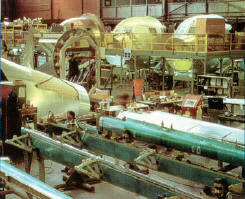How do I Get “Buy In” for My Advanced Planning and Scheduling Software Implementation?
You are considering implementing Advanced Planning and Scheduling software. You know that the “buy-in” of your people is crucial to the success of your implementation. How should you set proper expectations? What should you do to get your people on board?
Involve Them in Targeted Demonstrations
Elsewhere on this site, we advocate working with your vendors to build and demonstrate a sample scheduling model. This model and demonstration should be reflect your manufacturing environment, include samples of your data, and show in a detailed manner how the production planning and scheduling software can be used to achieve your goals. Operational and planning and scheduling staff should be involved in this demonstration. It will focus your staff on the benefit the software can bring to your company. The demo will let them see the proverbial pot of gold at the end of the rainbow.
Help Planning and Scheduling Staff Understand How the Content of their Jobs Might Change
You will not get the full benefit of production scheduling software or production planning software through simply automating existing manual processes. Therefore, change is inevitable. When change is afoot, it is natural for staff members to question how that change will affect each of them personally. Setting realistic expectations will allay fears and increase buy in.
The goal when implementing any business software system is to marry what software does well with what people do well. In the case of planning and scheduling, software can perform the repetitive tasks associated with building a scheduling much faster than any person. Software can also present schedule output in easy to interpret formats. People are best at analyzing software output in light of their knowledge of business conditions, and in using their creativity to use the software in ways that solve real business problems.
The net result of the software on staff time may be a “wash”. The software will generate schedules much more quickly than ever before. However, to achieve full benefit from the software, staff may need to devote the time saved on repetitive calculations to increased analysis. This increased analysis is what drives business benefits.
Plan for a Heavier Work Load During Implementation, and Look for Creative Ways to Manage the Extra Work
Advanced Planning and Scheduling software Implementations can take some time. The implementation will require the input of existing planning and scheduling staff. For instance, staff will need to describe important information that productions schedules require, and review trial software-generated production schedules for “goodness”.
However, in addition to helping with the implementation, planning and scheduling staff need to keep the existing business running and hitting its targets. You should try to maintain morale by looking for ways to lighten their load. For instance, temporary staff might be able to assume more repetitive calculation or data entry tasks. Also, rather than increasing the load of existing planning and scheduling staff, you may want to involve in the implementation staff with specific expertise in project management.
Ask Shop Floor Staff for Their Help
As a key internal customer for the output of the manufacturing scheduling software, shop floor staff need to be involved. Their opinion on what constitutes a “good schedule” can be as important as that of planning and scheduling staff. They also need to be prepared for schedules that are, at least initially, different from what they are used to. Schedules will improve as the organization becomes more familiar with the planning and scheduling software and the revised planning and scheduling process. Shop Floor staff need to understand that their input and patience are crucial to the success of this process.
Provide Proper Training
Most managers realize that basic training (on “which buttons to press when”) is essential to the success of any software implementation. While such basic training is also required for the success of Advanced Planning and Scheduling software, you’ll probably need to provide your staff additional training to broaden the scope of their business skills.
You’ll achieve the most significant benefits from planning and scheduling software when you use it as a decision support tool. Used in this manner, the software can show you the impact of alternate business decisions both in the present and in the future. Existing staff often need training to understand what alternative business decision to test in what circumstances, and how to evaluate and chose the best scenario when business metrics are in conflict. You can read more about Training for Advanced Planning and Scheduling Software.
